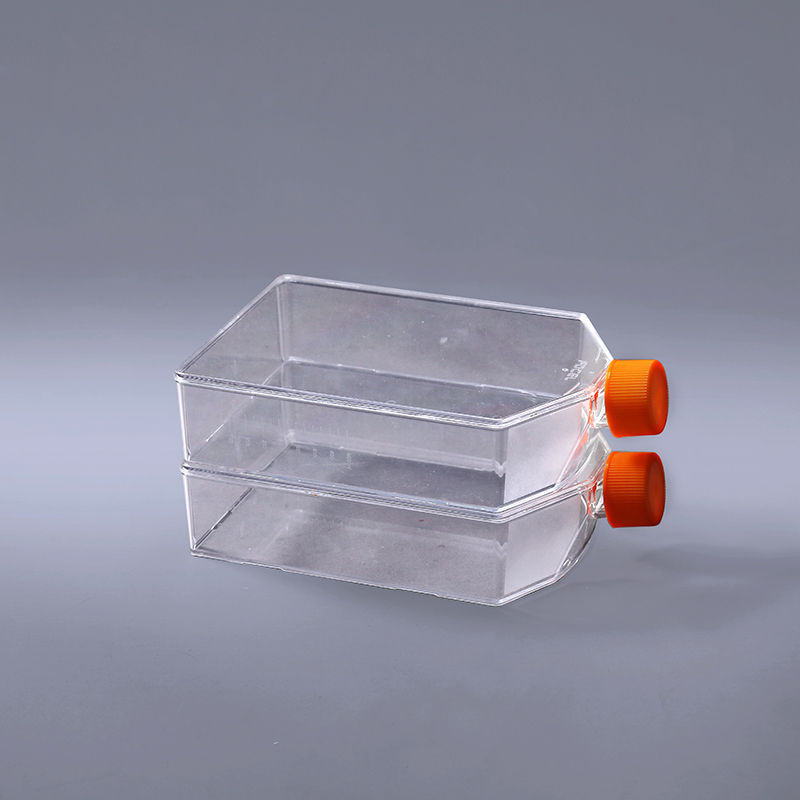er lavet af medicinsk kvalitet polystyrenmateriale med høj gennemsigtighed. Ifølge forskellige overfladebehandlingsprocesser er det opdelt i to typer: hydrofile og hydrofobiske.: bruges til dyrkning af adhærente celler. Væksten af sådanne celler skal have en støtteoverflade, der kan fastgøres, og cellerne kan vokse og formere sig på denne overflade ved at stole på vedhæftningsfaktorer, der udskilles af dem selv eller tilvejebringes i dyrkningsmediet. Flaskens overflade har gennemgået en speciel modifikationsbehandling for at introducere hydrofile grupper. Formålet med dette er at øge vedhæftningsevnen af flaskens overflade, som er mere egnet til cellevækst.cellekulturkolber
Ovenstående er to typer cellekulturkolber, som hovedsageligt er velegnede til mellemskala celle- og vævskultur i laboratoriet. Det brede flaskehalsdesign gør det lettere for pipetten og celleskraberen at komme i kontakt med vækstoverfladen.Hydrofobisk cellekulturkolbe
The above are two types of cell culture flasks, which are mainly suitable for medium-scale cell and tissue culture in the laboratory. The wide bottleneck design facilitates the pipette and cell scraper to contact the growth surface.
The FAI climbed 5.9 percent year-on-year in the first 11 months of 2018, quickening from the 5.7-percent growth in Jan-Oct, the National Bureau of Statistics (NBS) said Friday in an online statement.
The key indicator of investment, dubbed a major growth driver, hit the bottom in August and has since started to rebound steadily.
In the face of emerging economic challenges home and abroad, China has stepped up efforts to stabilize investment, in particular rolling out measures to motivate private investors and channel funds into infrastructure.
Friday's data showed private investment, accounting for more than 60 percent of the total FAI, expanded by a brisk 8.7 percent.
NBS spokesperson Mao Shengyong said funds into weak economic links registered rapid increases as investment in environmental protection and agriculture jumped 42 percent and 12.5 percent respectively, much faster than the average.
In breakdown, investment in high-tech and equipment manufacturing remained vigorous with 16.1-percent and 11.6-percent increases respectively in the first 11 months. Infrastructure investment gained 3.7 percent, staying flat. Investment in property development rose 9.7 percent, also unchanged.
 English
English



















































